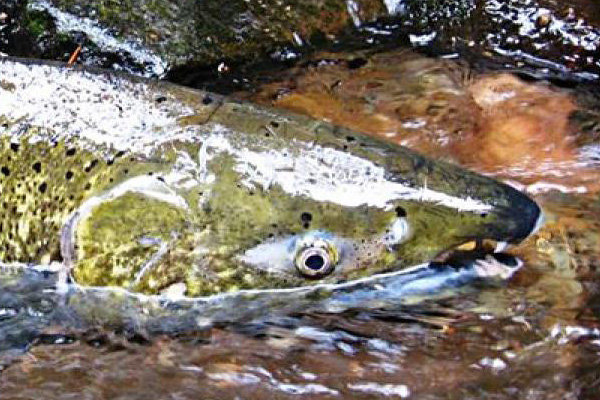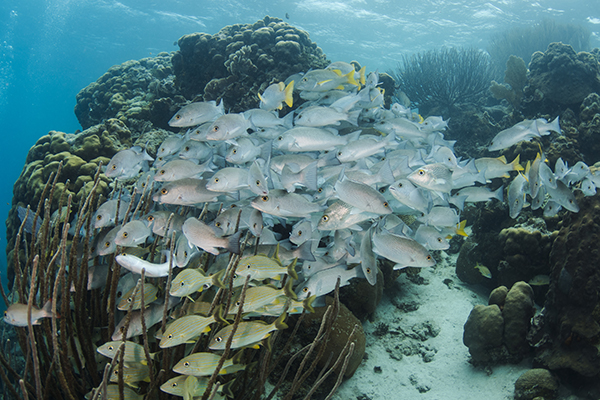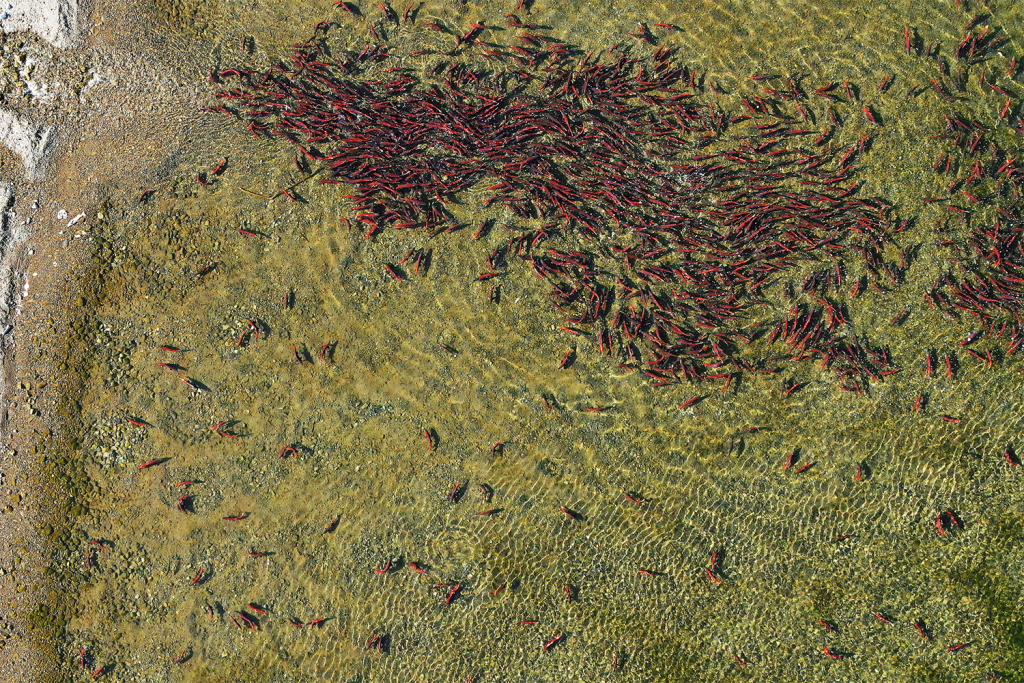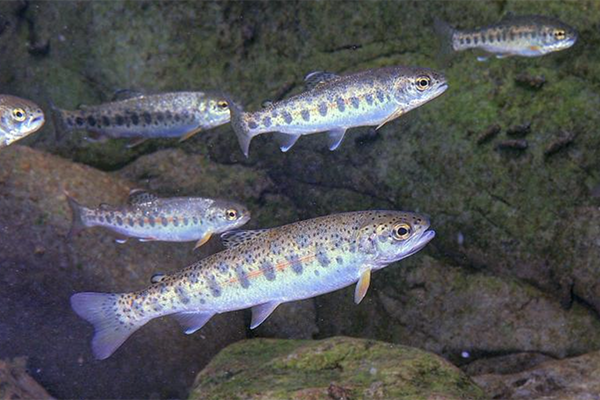Hatchery-born Chinook salmon could help re-establish wild salmon populations, potentially improving health over generations, new study finds

A new study that tracked the “family trees” of almost 10,000 fish has found that Chinook salmon offspring from hatcheries in an Oregon river show improved fitness. In this study, fitness is measured by the number of adult offspring a fish produces, with higher fitness leading to more offspring. The finding, based on data collected over 13 years, is encouraging for Chinook salmon recovery efforts.
“Previous studies have shown that hatchery-origin Chinook salmon have lower reproductive success relative to their natural-origin counterparts when they spawn in the wild, but this study looks beyond that,” said Kathleen O’Malley, an associate professor at Oregon State University and the study’s senior author.
“While our work doesn’t contradict the earlier findings, we found that the first-generation descendants of these hatchery-origin Chinook salmon produced more offspring than hatchery-origin salmon spawning alongside them in the river, meaning that reproductive success may improve in the wild as quickly as it declines in the hatchery.”
Cougar Dam on the South Fork McKenzie River blocks almost 25 miles of historical salmon spawning habitat within the McKenzie sub-basin. At the base of the dam, an adult fish collection facility, constructed in 2010, allowed fisheries managers to collect and reintroduce returning adult Chinook salmon above the dam.
Researchers collected tiny fin samples from salmon arriving at the collection facility over the years and used them to determine parent and offspring relationships and quantify their numbers.
“Essentially, we created family trees for each fish, similar to how you would trace your ancestry using a DNA service,” O’Malley said. “We were able to create a pedigree for nearly 10,000 fish in this system.”
They found that first-generation, wild-born descendants of two hatchery-origin fish produced significantly more adult offspring than hatchery-origin salmon that spawned alongside them in the river. These first-generation descendants produced similar numbers of offspring to natural-origin fish.
“Attempts to recover or reintroduce a population using wild salmon are often limited by the lack of a healthy nearby donor population,” O’Malley said.
The findings offer hope that naturally spawning Chinook salmon populations can be established from hatchery-origin salmon and that re-established populations may experience generational increases in fitness as they spawn naturally in the wild.
The results suggest that hatchery-born Chinook salmon could help establish wild populations, potentially improving their health over generations. However, the study design did not allow the researchers to determine what led to the increase in fitness between the first-generation, wild-born salmon and the hatchery-origin salmon.
“We don’t know if it’s genetic, if it’s the environment, or if the two interact,” O’Malley said.
Can dam removal actually restore fish populations in U.S. rivers?
Concerns remain about how hatchery-born salmon might affect the genetic health and productivity of wild populations. Mixing hatchery and wild salmon too much could harm the fitness of wild fish unless it’s carefully managed, according to O’Malley.
The scientists cautioned that their findings might not apply to other rivers with low natural fish numbers or where salmon from different areas were introduced. Also, these conclusions might not be relevant for steelhead or other salmon species. Furthermore, the specific practices at the McKenzie River hatchery could have preserved genetic diversity and improved fitness in wild-born offspring from hatchery fish.
Nonetheless, O’Malley said the study’s findings offer encouraging news for the use of hatchery salmon in support of conservation and recovery efforts.
Now that you've reached the end of the article ...
… please consider supporting GSA’s mission to advance responsible seafood practices through education, advocacy and third-party assurances. The Advocate aims to document the evolution of responsible seafood practices and share the expansive knowledge of our vast network of contributors.
By becoming a Global Seafood Alliance member, you’re ensuring that all of the pre-competitive work we do through member benefits, resources and events can continue. Individual membership costs just $50 a year.
Not a GSA member? Join us.
Author
-
Responsible Seafood Advocate
[103,114,111,46,100,111,111,102,97,101,115,108,97,98,111,108,103,64,114,111,116,105,100,101]
Tagged With
Related Posts

Fisheries
Study: Many marine protected areas are failing to rebuild fish populations
To replenish adult spawners, marine protected areas, or MPAs, need strong enforcement, effective management and climate-friendly design to succeed.

Fisheries
As Yukon Chinook salmon populations decline, researchers turn to technology for answers
Using drones, researchers seek to better understand where, along an almost 2,000-mile migratory route, things go wrong for Chinook salmon.

Fisheries
OSU: Columbia River Basin fish stocks fail to improve despite billions in conservation spending
Efforts totaling more than $9 billion have failed to improve stocks of salmon and steelhead in the Columbia River Basin, new research finds.

Fisheries
Even with Pebble Mine dead in the water, mining-fishing collisions may be inevitable
Mining can degrade water quality and impact fisheries, but some consider the Pebble Mine in Alaska as necessary for the metals for green tech.



